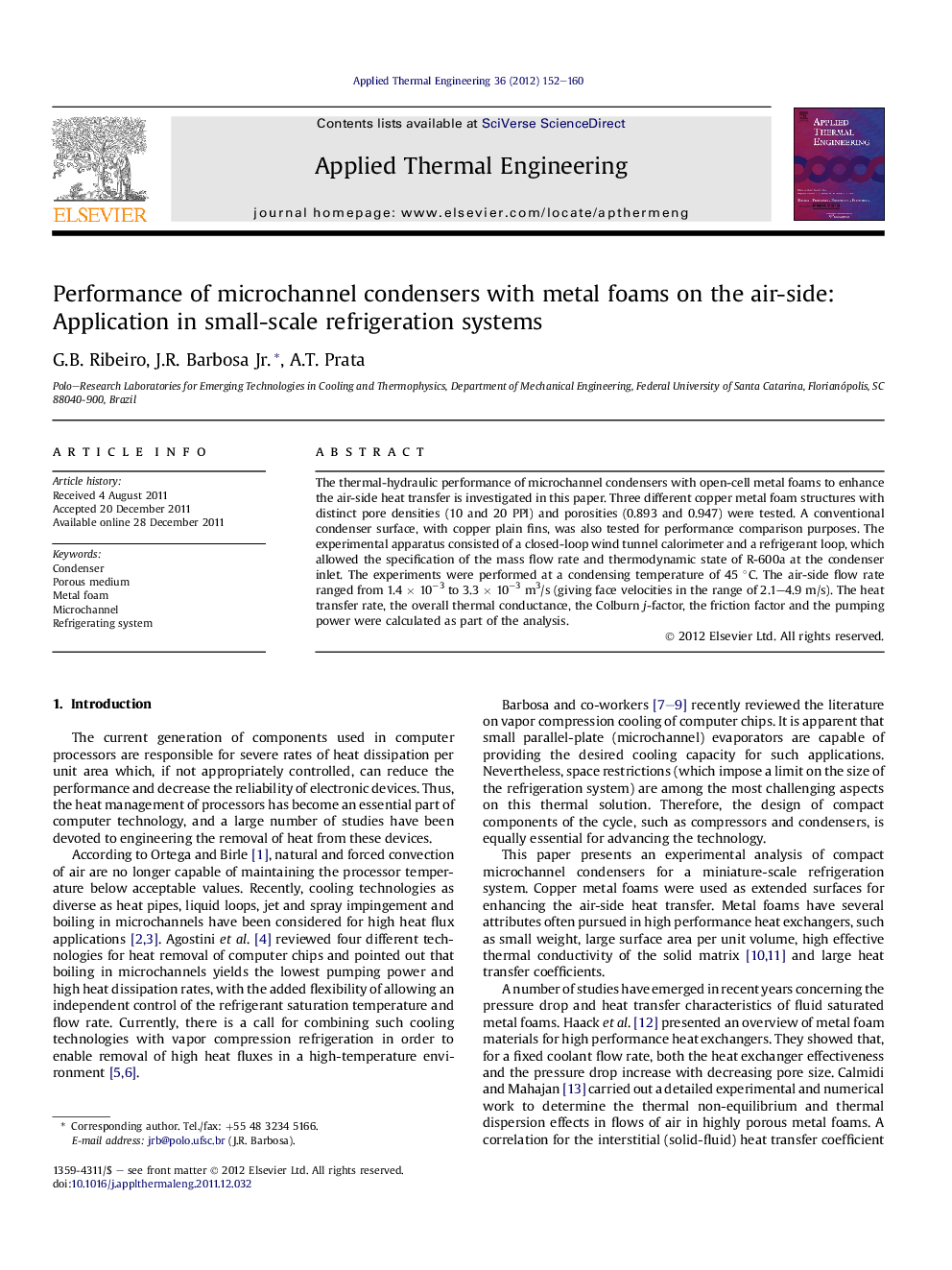| Article ID | Journal | Published Year | Pages | File Type |
|---|---|---|---|---|
| 647820 | Applied Thermal Engineering | 2012 | 9 Pages |
The thermal-hydraulic performance of microchannel condensers with open-cell metal foams to enhance the air-side heat transfer is investigated in this paper. Three different copper metal foam structures with distinct pore densities (10 and 20 PPI) and porosities (0.893 and 0.947) were tested. A conventional condenser surface, with copper plain fins, was also tested for performance comparison purposes. The experimental apparatus consisted of a closed-loop wind tunnel calorimeter and a refrigerant loop, which allowed the specification of the mass flow rate and thermodynamic state of R-600a at the condenser inlet. The experiments were performed at a condensing temperature of 45 °C. The air-side flow rate ranged from 1.4 × 10−3 to 3.3 × 10−3 m3/s (giving face velocities in the range of 2.1–4.9 m/s). The heat transfer rate, the overall thermal conductance, the Colburn j-factor, the friction factor and the pumping power were calculated as part of the analysis.
► Heat transfer and pressure drop in condensers with metal foams on air-side. ► Air-side pressure drop increases with pore density and decreases with porosity. ► Air-side thermal conductance increases with pore density and decreases with porosity. ► Comparison with corrugated plain fin condenser was carried out. ► Thermal conductance vs. pumping power shows that metal foams are not advantageous
